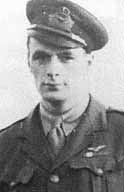Ernest Norton (RAF officer) facts for kids
Quick facts for kids
Ernest Norton
|
|
|---|---|

A portrait of Ernest William Norton
|
|
| Born | 14 May 1893 Dolguan, Newtown, Montgomeryshire, Wales |
| Died | 23 May 1966 (aged 73) Weston-super-Mare, Somerset, England |
| Allegiance | United Kingdom |
| Service/ |
British Army Royal Navy Royal Air Force |
| Years of service | 1914–1944 |
| Rank | Air Commodore |
| Commands held | No. 5 Flying Training School (1932–37) RAF Upavon (1930–32) No. 58 Squadron RAF (1927–28, 1929–30) RAF Worthy Down (1929) No. 70 Squadron RAF (1925–26) No. 6 Armoured Car Company (1924–25) No. 65 Wing RAF (1918–19) No. 204 Squadron RAF (1918) No. 9 Squadron RNAS (1917–18) No. 12 Squadron RNAS (1917) |
| Battles/wars | First World War Second World War |
| Awards | Distinguished Service Cross Officer of the Order of the Crown (Belgium) Croix de guerre (Belgium) Croix de guerre (France) |
Air Commodore Ernest William Norton (14 May 1893 – 23 May 1966) was a brave British air officer. He started his military journey as a pilot during the First World War. He was known as a "flying ace" because he shot down nine enemy aircraft. After the war, he continued to serve in the Royal Air Force (RAF). He worked in different places, both in Britain and abroad. By 1937, he was in charge of the RAF Headquarters in Singapore. Later, during the Second World War, he served with RAF Fighter Command in Britain. He retired from the RAF in 1944.
Contents
Early Life
Ernest Norton was born in a place called Dolguan, near Newtown in Montgomeryshire, Wales. His father was Clement W. Norton. Ernest went to Newtown County School. After school, he worked at a car repair shop in Welshpool.
First World War Hero
When the First World War began in August 1914, Ernest Norton joined the army. He served as a despatch rider, which meant he delivered important messages on a motorcycle.
In May 1915, he joined the Royal Naval Air Service (RNAS). This was the part of the navy that used airplanes. He trained to be a pilot. By July, he had earned his pilot's license. He flew a Maurice Farman biplane during his training.
In September 1915, he became a flight sub-lieutenant. He was sent to a squadron at Dover. In January 1916, he dropped a bomb on a German U-boat (submarine) near Ostend. Later, he was hurt during an attack on a Zeppelin (a large airship).
In July 1916, he was promoted to flight lieutenant. He became an acting flight commander, leading a group of planes. On 20 October, he flew a Nieuport 11 plane. It was armed with special rockets. He used these rockets to destroy an enemy observation balloon near Ostend. This was a very brave act. He received the Distinguished Service Cross for it. This award is given for bravery in battle.
Flying Ace Achievements
After this, Norton joined No. 6 Squadron RNAS. He flew a Nieuport 17bis plane on the Western Front. This was where much of the fighting happened.
- On 8 February 1917, he forced an enemy Aviatik C plane to crash near Houthulst Forest.
- On 5 April, he shot down two Albatros D.II planes near Douai.
- On 9 April, he shot down two more Albatros D.III planes over Cambrai. His own plane crashed, but he survived.
- On 29 April, he shot down another D.III plane near Honnecourt. Later that same day, he shot down two more D.IIIs over Guise.
In total, Ernest Norton achieved nine aerial victories. This earned him the title of a "flying ace."
In June 1917, he was promoted to flight commander. He then became the leader of No. 12 Squadron and later No. 9 Squadron. By December 1917, he was a squadron commander.
On 1 April 1918, the RNAS joined with the Royal Flying Corps to form the Royal Air Force (RAF). Norton became a major in the new RAF. He continued to command different squadrons and wings until the war ended.
Between the World Wars
After the First World War, Ernest Norton received several awards from other countries.
- Belgium made him an Officer of the Order of the Crown.
- France awarded him the Croix de guerre with Palm.
- He also received the Belgian Croix de guerre.
In August 1919, he officially joined the RAF permanently as a squadron leader.
Norton continued his career in the RAF. He worked as an instructor at flying schools. He also served in Iraq, where he commanded an armoured car company. In July 1925, he was promoted to wing commander. He then took command of No. 70 Squadron RAF in Iraq.
Later, he returned to England. He attended a special Staff Course at the Royal Naval College, Greenwich. After this, he commanded No. 58 Squadron RAF. In 1928, he took part in a big air show at Hendon Aerodrome. He also led his squadron in important air exercises. These exercises helped test how well the RAF units worked together.
Norton continued to rise through the ranks. He became Station Commander at RAF Upavon in 1930. In July 1932, he was promoted to group captain. He then commanded No. 5 Flying Training School.
On 1 January 1937, he became an air commodore. This is a very senior rank. He was put in charge of administration for RAF Coastal Command. Later that year, he was sent to Singapore. There, he was in charge of administration for the RAF Far East headquarters.
Second World War and Retirement
When the Second World War began, Ernest Norton returned to the United Kingdom. From September 1941, he served as Duty Air Commodore at the Headquarters of RAF Fighter Command. This was a very important role during the war. He retired from the RAF on 24 February 1944.

